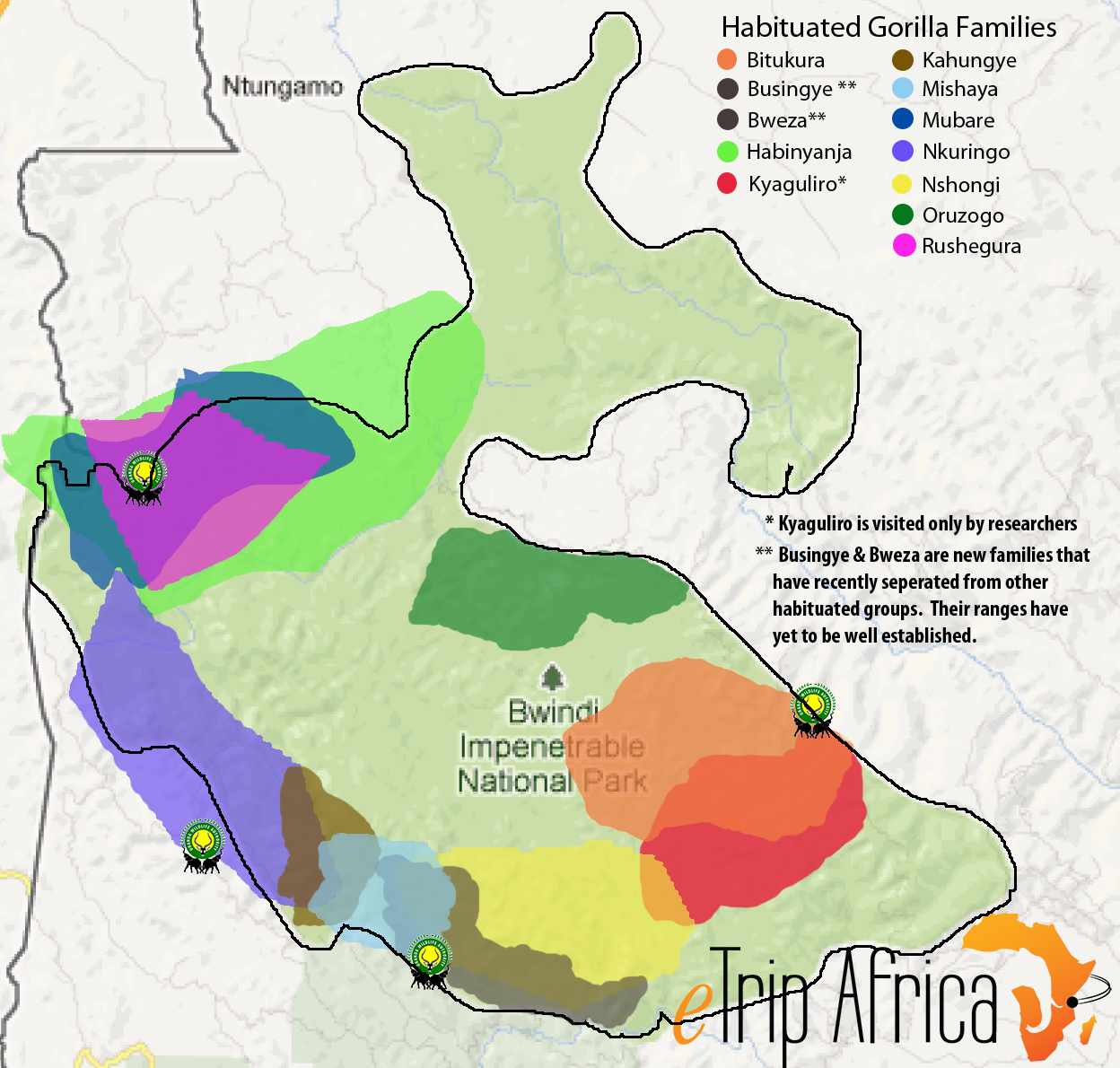Uganda's Mountain Gorillas
Uganda proudly claims to be home to more than half of the world’s remaining Mountain Gorilla population. Over the years Gorilla Tracking has become the driving force of tourism in Uganda. The primary location for tracking mountain gorillas is Bwindi Impenetrable National Park, which is home to nearly all of the habituated gorilla families. The secondary tracking site is the Mgahinga National Park, home to one habituated family that often wanders of the border into neighboring Rwanda.
Bwindi Naitonal Park
With only an estimated 880 mountain gorillas left in the world, it is a true experience to simply have the opportunity to see one in the wild. These few remaining animals are spread out between two distinct areas. The first is the Virunga Massif, a well preserved rain forest that encompasses Volcanoes National Park of Rwanda, the Virunga National Park of the Democratic Republic of Congo (DRC), and Mgahinga Gorilla National Park of Uganda. The second area is Bwindi National Park of Uganda.
In an effort to save the mountain gorilla from extinction, park officials have selected gorilla families that could be habituated so that tourists could visit them in their natural environment. The families have undergone extensive interactions with park rangers and researchers over several years for them to become habituated to the presence of people.

Buhoma Sector
The Buhoma section of the park has traditionally been the busiest area of the park. In 1993, gorilla tracking became an official activity in Bwindi. However, it was not until 1998 when the first officially habituated group was opened to tourists, in the Buhoma section. With such a unique attraction, this zone developed rather quickly and several lodges where built. Today there are far more hotel rooms then gorilla permits in this area.
Tracking in the Buhoma region is suggested by many as the easiest area for tracking gorillas, because the families can sometimes be found rather close to the ranger station, or even on rare occasions at the lodges themselves. Sometimes this advice is true and a family is found within 30 minutes from the ranger station. But, this advice is more often not true, with visitors typically reporting 4-6 hour strenuous treks through the dense forest.
The Habinyanja family had 19 individuals on July 3rd, 2013. The six infants and three juveniles in the group make for a spectacular experience.
Mubare Gorilla Family (M Group)
On April 23rd, 2015 it was reported that the Mubare family currenlty has 14 individuals, Silverback Kanyonyi, 5 adult females, 4 sub-adult femailes and 4 babies.
Rushegura Gorilla Family
The Rushegura family is made up of 13 individuals as of March 11, 2015.
Nkuringo Sector
The Nkuringo Sector is located to along the southwest side of the Bwindi Impenetrable National Park. The areas is possible the most scenic part of the park, offering magnificent views over the park not to mention the unique views of the volcanoes located in the Virunga Range to the south of the park.
Currently, there is only one gorilla group that is tracked out of the Nkuringo Ranger Station; however the relative proximity to the Rushaga Sector means that visitors have access to a total of six habituated gorilla families without needing to change accommodations.
Nkuringo Gorilla Family
The Nkuringo family currenlty has 16 individuals.
Rushaga Sector
The Rushaga Sector is located along the southern border of the park. The sector is also quite new, having only started with one habituated gorilla family that was opened to tourism in 2009. However, this original group was the largest family to ever be habituated and thus drew in many visitors. The family has since divided into different family groups and the habituation of another family, the sector now has five habituated Gorilla groups.
The area has a rather unique topography which gives trekkers a scenic, but at times a rather difficult, hike into the dense forest. Treks often follow the Ruhezamyenda River which borders the park, but at times the river is to high, forcing visitors to take longer routes over the high ridges and through the difficult vegetation of the forest.
Busingye Gorilla Family
The Nkuringo family currenlty has 16 individuals.
Bweza Gorilla Family
At the end of June, 2013 the Bweza family had 9 members.
Kahungye Gorilla Family
On Feb 28 of 2015 the Kahungye Family had a total of 22 members, including 3 silver backs.
Mishaya Gorilla Family
In the middle of June, 2013 it was reported by clients that the Mishaya group had 7 members.
Nshongi Gorilla Family
On the 28th of May, 2013 the Nshongi group had 18 members.





